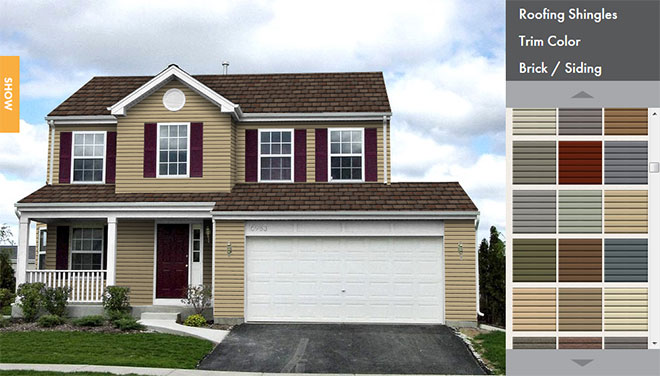EPDM Single-Ply Roofing
EPDM single-ply roof systems have represented a third of the volume of the low-sloped commercial market for close to twenty years. The majority of this roof system is receiving the full manufacturer’s warranty. EPDM has achieved a reputation in the industry as a long-lasting material, and advancements in materials, techniques, and components have given manufacturers the confidence to offer the industry’s longest warranties of thirty years.
EPDM is More Than Just a Black Membrane
In the midst of tough economic times and the increasing popularity of sustainable commercial roofing materials, suppliers of ethylene propylene diene monomer (EPDM) continue to see the many benefits of this system, including its outstanding weathering characteristics, flexibility, durability, hail resistance and life cycle costs. However, when seeking a “cool” roofing option, many building professionals do not realize that EPDM provides similar energy savings as its white, non-EPDM, counterparts. According to the EPDM Roofing Association, EPDM market share in Europe is around 12 percent and growing, compared to 35 percent in the North America where 20 billion-plus square feet has been installed on low-slope roofs. There has also been continued growth of EPDM in the Middle East and China.
Behind more than four decades of successful field performance, EPDM has become the system of choice for many suppliers, contractors, specifies and building owners worldwide. With superior wind, hail and fire resistance, EPDM also handles the sometimes harmful effects of Mother Nature. Weather ability is main benefit to EPDM’s success, and a recent study showed that new and aged nonreinforced EPDM roof assemblies offered a high degree of hail resistance over a variety of roofing substrates, including polyiso, wood fiber, plywood and OSB board.
EPDM is also available for use in a variety of climates because of its dimensional stability and ability to expand and contract with movement. Its unique formulation ensures that EPDM is virtually resistant to harmful ozone exposure and UV radiation, along with cold cracking. EPDM does not rely on plasticizers to achieve flexibility, so there is no danger of the membrane becoming brittle from plasticizer loss in the future. As with any roofing system, insulation is important to ensure the building is energy efficient. Adding additional insulation to an EPDM project can not only increase the R-value, but eliminate thermal short circuits and potential moisture issues.
EPDM Is An Energy-Efficient & Sustainable Roofing System
EPDM offers Commercial Roofing Contractors a variety of energy efficient options. White EPDM membrane systems have been created to enhance UV resistance. These systems provide the same performance characteristics as black EPDM membranes but with added environmental and energy benefits. White coatings that can be applied to the black EPDM membrane surface have also become increasingly popular to extend the roof life, increase energy savings and decrease pollution. Ballasted EPDM roofing systems also play a similar role to reflective roof surfaces. Although pavers and stone ballast do not have as high reflectivity rates as white coatings, ongoing tests indicate that there is a positive impact on energy usage with this EPDM system type. The ballast absorbs the heat during the day while shading the roof membrane and then releases the heat during the evening hours.
EPDM Roofing Systems may be selected for many commercial and industrial roofing applications. The choice of system is left up to the specifier, however, there are certain guidelines that should be followed in order to assure that the system chosen is appropriate. EPDM membranes can be installed fully adhered, mechanically attached or ballasted.
Ballasted EPDM Roof System
The ballast system is often used over expanded polystyrene insulation, which is lightweight, economical and energy efficient. Because the EPDM adhesives dissolve the polystyrene, the membrane is only laid over the insulation, mechanically attached around the perimeters and held down with ballast. The ballasted system is the most economic EPDM roofing system on the market and it is suitable for various types of buildings. The EPDM system is loose laid over appropriate roof deck. Adjoining sheets of EPDM membrane are spliced together a minimum of 6″ using splice tape, forming continuous watertight membrane. This multifunctional system usually utilizes 0.045″ thick EPDM membrane. Once the EPDM membrane is laid, the following materials may be used as ballast:
- Rounded water-worn gravel without sharp edges and with suitable size (20 to 40 mm
- Concrete slabs (minimum thickness 50 mm) with smooth decorative finish. The installation of protective material between the slabs and the EPDM membrane may be required,
- Crushed stone, which must be calibrated; the bigger the stone, the greater the weight. Protective material must be used between the crushed stone and the EPDM membrane.
The Benefits of Ballasted EPDM are: use of large-scale EPDM panels, fewer splices, a wide range of modern roof decks, quick installation, low installation cost and excellent fireproof properties.
Mechanical Attached EPDM Roof System
If the structure cannot support the additional weight of ballast, or if EPDM is being installed over existing roofing material, such as tar and gravel, a mechanical attached system is a better choice. Reinforced EPDM is recommended for mechanically attached applications because it is resistant to punctures/tears and wind fatigue at anchors. Mechanically fastened System is a system, which may not sustain the additional weight of the ballast and have surface, suitable for mechanical fastening. The system utilizes wide membrane panels, loose laid onto the substrate. The panels in the outer areas may be either fully adhered or mechanically fastened. The membrane panels in the internal areas are fastened mechanically by nailed plates, placed over the panel and protected by pressure-sensitive 150 mm strips, covering the nailed plates. The installation rate of the plates (up to 6′) varies in accordance with the wind rating. Adjoining membrane sheets are spliced together using secure tape and overlap by at least 6″ in order to form continuous airtight membrane. The system may be used with 1.52 mm thick EPDM membrane.
The Benefits of Mechanically Fastened EPDM are: use of large-scale EPDM panels, fewer splices, fast installation rate, quick installation, light weight.
Fully Adhered EPDM Roof System
The fully adhered system is the most common, especially on residential buildings. Typically it has fewer problems than the other two applications. EPDM Fully-Adhered is a light-weight system with special flexibility design. It is suitable for irregular configuration or shape roofs, as well as for steeply pitched (more than 10%) roofs. This system is also suitable for roofs, which cannot sustain the additional weight of the ballast. The system usually utilizes 9′ wide waterproofing panels, adhered directly ad fully to acceptable substrates by means of a bonding adhesive. The adjacent sheets must overlap by at least 6″ and the splices are carried out by means of pressure-sensitive strip, forming continuous airtight membrane. The system may utilize 1.15 or 1.52 mm thick EPDM membrane. The Benefits of Fully Adhered EPDM are: may be used for all kinds of slopes, suitable for irregular roof configurations, high wind uplift resistance, light weight, esthetic outlook.
Warranties
Based on the warranty records of the three billion square feet of EPDM roofs, EPDM roofing performance has improved dramatically over the past 20 years. In fact, the improvement in performance now makes the cost of servicing an EPDM roof for ten years almost negligible. Given the extremely low cost of warranty service through the first ten years of service, it is also likely that the great majority of these roofs will continue to offer superior service for many years beyond the ten years of this study. It also appears this improvement has been most significant for EPDM recover systems. Given the escalating costs associated with roof tear-off and the ever-present financial constraints on building owners, a roofing designer certainly can take comfort knowing that a properly selected EPDM recover system may provide an acceptable service life at a reasonable cost. Of course, the data presented in this article should not be used to endorse recovers in all situations. Existing roofs that are saturated with water or seriously deteriorated are obviously candidates for a complete tear-off. However, when an EPDM recover system is properly installed over a suitable existing roof, it will provide many years of acceptable service with minimal warranty service expense.


 Click Here
Click Here Click Here To Use
Click Here To Use